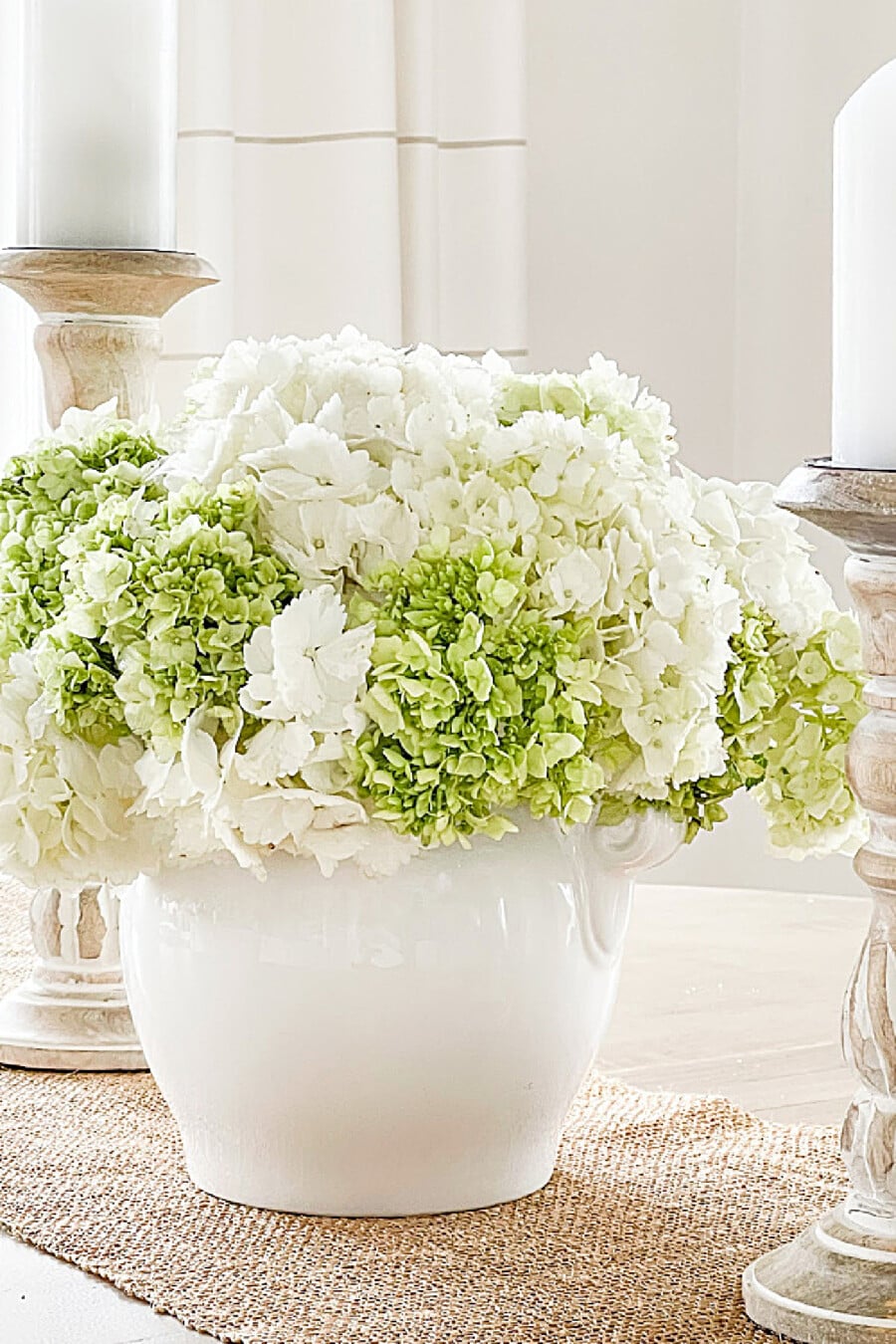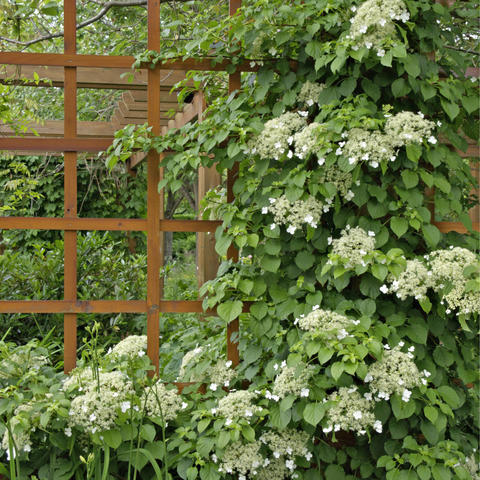Cbs Sunday Morning: The Magic Of Hydrangeas
CBS Sunday Morning: The Magic of Hydrangeas
Hydrangeas are some of the most popular flowering shrubs in the world, and for good reason. They come in a wide variety of colors, sizes, and shapes, and they can add a touch of elegance and beauty to any garden. But what many people don't know is that hydrangeas are also surprisingly easy to care for.
In this blog post, we'll take a closer look at the magic of hydrangeas. We'll discuss their history, different varieties, and how to care for them properly. We'll also share some tips on how to get the most out of your hydrangeas.
So whether you're a gardening novice or a seasoned pro, read on to learn more about these amazing plants.
History of Hydrangeas
Hydrangeas are native to Asia, and they've been cultivated for centuries. The first hydrangeas were brought to Europe in the 17th century, and they quickly became popular among gardeners. In the 19th century, hydrangeas were introduced to North America, and they've been a beloved garden staple ever since.
There are over 70 species of hydrangeas, and they come in a wide variety of colors, including white, pink, blue, purple, and green. Hydrangeas can be deciduous or evergreen, and they can grow as shrubs or trees.
Different Varieties of Hydrangeas
The most common type of hydrangea is the bigleaf hydrangea (Hydrangea macrophylla). Bigleaf hydrangeas have large, showy blooms that can range in color from white to pink to blue. They're typically grown as shrubs, and they can reach heights of up to 6 feet.
Another popular type of hydrangea is the lacecap hydrangea (Hydrangea paniculata). Lacecap hydrangeas have smaller, more delicate blooms that are arranged in a lace-like pattern. They're typically grown as trees, and they can reach heights of up to 20 feet.
Other popular varieties of hydrangeas include:
- Oakleaf hydrangea (Hydrangea quercifolia): This type of hydrangea has large, oak-shaped leaves and white or pink blooms.
- Smooth hydrangea (Hydrangea arborescens): This type of hydrangea has small, white blooms that appear in clusters.
- Climbing hydrangea (Hydrangea petiolaris): This type of hydrangea can climb trees or walls. It has white or pink blooms that appear in the summer.
How to Care for Hydrangeas
Hydrangeas are relatively easy to care for, but they do require some basic care. Here are a few tips:
- Hydrangeas need full sun or partial shade.
- They prefer moist, well-drained soil.
- Water hydrangeas regularly, especially during the summer months.
- Fertilize hydrangeas in the spring with a balanced fertilizer.
- Deadhead spent blooms to encourage new growth.
- Protect hydrangeas from frost in the winter.
With proper care, hydrangeas will thrive for many years.
Tips for Getting the Most Out of Your Hydrangeas
Here are a few tips for getting the most out of your hydrangeas:
- Choose the right variety for your climate. Some varieties of hydrangeas are more cold-hardy than others.
- Plant hydrangeas in a location that gets full sun or partial shade.
- Water hydrangeas regularly, especially during the summer months.
- Fertilize hydrangeas in the spring with a balanced fertilizer.
- Deadhead spent blooms to encourage new growth.
- Protect hydrangeas from frost in the winter.
- Experiment with different soil pH levels to change the color of your hydrangea blooms.
With a little care and attention, you can enjoy beautiful hydrangeas for many years to come.
Conclusion
Hydrangeas are truly magical plants. They're beautiful, versatile, and relatively easy to care for. If you're looking for a new addition to your garden, hydrangeas are a great choice.
With so many different varieties to choose from, you're sure to find the perfect hydrangea for your needs. So what are you waiting for? Start growing hydrangeas today!
Did you see the CBS Sunday Morning segment on hydrangeas? It was fascinating! Correspondent Mo Rocca visited a garden in Sandwich, Massachusetts, to learn more about these beautiful flowers. He spoke with C.L. Fornari, a hydrangea expert, who shared some of her tips for growing and caring for hydrangeas.
Fornari said that hydrangeas like both morning sun and afternoon shade. They are also big drinkers, so they need to be watered regularly. She recommends watering hydrangeas from the bottom of the plant, so that the leaves don't burn in the sun.
Fornari also talked about the different colors that hydrangeas can be. The color of the flowers depends on the acidity of the soil. In alkaline soil, hydrangeas will be blue. In acidic soil, they will be pink. You can change the color of your hydrangeas by adding aluminum sulfate to alkaline soil or by adding sulfur to acidic soil.
If you're interested in learning more about hydrangeas, I recommend visiting . This website has a wealth of information about hydrangeas, including care tips, planting instructions, and a variety of hydrangeas to choose from.
FAQ of cbs sunday morning hydrangeas
- What hydrangeas were featured on CBS Sunday Morning?
On the June 25, 2023 episode of CBS Sunday Morning, a segment was aired about hydrangeas. The hydrangeas featured in the segment were Annabelle hydrangeas, which are known for their large, round blooms. Annabelle hydrangeas are hardy plants that can tolerate a wide range of conditions, making them a good choice for many gardens.
- What are the different types of hydrangeas?
There are many different types of hydrangeas, each with its own unique characteristics. Some of the most common types of hydrangeas include:
- Bigleaf hydrangeas: These hydrangeas have large, showy blooms that can be blue, pink, or white. They are a popular choice for gardens in temperate climates.
- Mophead hydrangeas: These hydrangeas have large, round blooms that resemble mops. They are a popular choice for gardens in all climates.
- Panicle hydrangeas: These hydrangeas have tall, upright clusters of blooms that can be white, pink, or blue. They are a popular choice for gardens in temperate climates.
- Aspera hydrangeas: These hydrangeas have small, bell-shaped blooms that are clustered together. They are a popular choice for gardens in mild climates.
- Quercifolia hydrangeas: These hydrangeas have leaves that resemble oak leaves. They are a popular choice for gardens in temperate climates.
- How do you care for hydrangeas?
Hydrangeas are relatively easy to care for. They need full sun to partial shade and well-drained soil. They should be watered regularly, especially during hot, dry weather. Hydrangeas also need to be fertilized in the spring and fall.
- How do you get hydrangeas to bloom blue?
The color of hydrangea blooms is determined by the acidity of the soil. In acidic soil, hydrangeas will bloom blue. In alkaline soil, hydrangeas will bloom pink. You can change the acidity of the soil by adding sulfur to acidic soil or lime to alkaline soil.
- Where can I buy hydrangeas?
Hydrangeas are available at most garden centers and nurseries. You can also buy hydrangeas online.
Image of cbs sunday morning hydrangeas
- Hydrangeas in bloom in front of the CBS Sunday Morning studio in New York City.

- A close-up of a hydrangea flower, its petals a delicate shade of blue.

- A cluster of hydrangeas in a vase, their blooms a vibrant pink.

- A row of hydrangea bushes in full bloom, their blossoms a mix of white, pink, and blue.
- A hydrangea trellis covered in blooms, providing a colorful backdrop for a CBS Sunday Morning segment.


Post a Comment for "Cbs Sunday Morning: The Magic Of Hydrangeas"